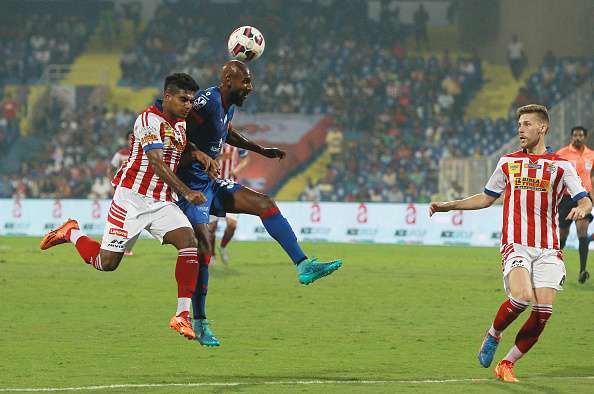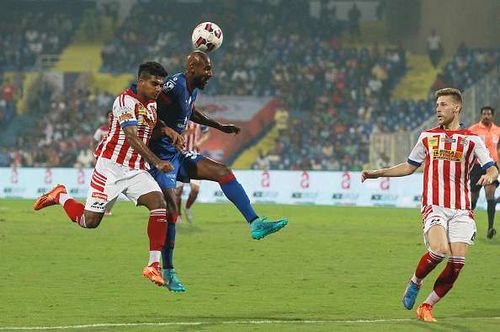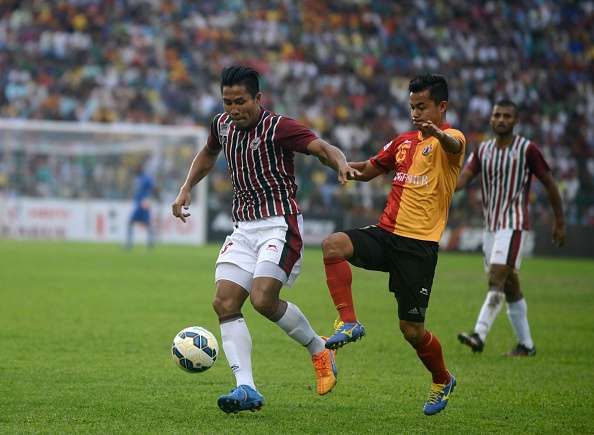
Future looks gloomy for I-League clubs after AIFF restructuring
AIFF has sounded the death knell for the present I-League clubs by announcing a new system which would make ISL the top-tier of Indian football. In a major restructuring move, AIFF along with its marketing partners IMG-Reliance have set a roadmap where ISL will become the nation’s top league 2017 onwards, followed by the present I-League and I-League 2 becoming League 1 and League 2 respectively.
The revamp comes as an initiative of improving India’s FIFA Ranking to 120 by 2018 and, more importantly, fix the disruptions which ISL has created in the football calendar in recent seasons. However, with the new structure in place, the most endangered are the current I-League clubs.
Second Tier for elite clubs with no chance of promotion?
Mohun Bagan, East Bengal and Salgaocar FC who have won the premier division title four, three and two times respectively would be relegated to the second tier. These teams have a rich history of over half a century (and more than a century in Mohun Bagan’s case) and a massive following throughout India.East Bengal and Mohun Bagan’s rivalry cross generations and is one of the oldest and fiercest derbies in the world.
Teams like Dempo, a five-time National League champion, who are fighting for promotion in I-League 2 would see them recede further back into the third tier, re-christened League 2, with the new system.
The new system also proposes that there would be no relegation in the ISL, which would mean League 1 teams would not get a chance for promotion to the top-tier even if they win the League. This would make League 1 lose the competitive edge as they will have no added incentive to finish at the top.
The ISL/ I-League dilemma for players
The proposed system would have three leagues running simultaneously over a five month period from 2017 and for seven months from 2018. This revised calendar would make the future League 1 teams incapable of attracting the best players to play for their clubs.
The present scenario sees most players having contracts with the I-League clubs who are loaned out to the ISL teams during their three-month season. However, if the restructuring goes forward, with the parallel leagues in place at the same time, the best 250 odd players in India would be seen playing in the ISL. This would see top players plying to sign for ISL clubs who would offer them more lucrative deals with the opportunity for playing in the premier division of the nation.
Where will the money come from?
Though the AIFF has invited tenders for the creation of new teams in the ISL, only Bengaluru FC seem to have the financial means to place a bid to seek admission to the ISL. AIFF has proposed sharing of central revenues from the ISL with the League 1 teams.
They have also promised to air of League 1 on the Star Network so improve its popularity. However, without the best players on show and nothing to play for as League 1 teams cannot seek promotion, it is highly doubtful how much the audience would want to see the second division teams on the pitch. With the little money the present I-League teams have, even with revenue sharing, they would lose the fan following and as a result will be unable to attract sponsors.
The past decade has seen clubs like JCT Mills and Mahindra United shut shop because of non-feasibility of competing under financial strain. Other clubs are barely surviving too. If the revamp goes forward, the present clubs would see them fail to continue as clubs at the national level.
AFC Cup berths at stake
The new system would mean that the winners of ISL would get an automatic entry to one of the two AFC Cup berths which would leave the to be League 2 teams fighting with each other and the ISL teams in the proposed Super Cup for the other solitary berth.
The present I-League teams are set to miss out there too owing to the disadvantage of playing in the second division and hence having inferior squads in comparison to the top tier. The new structure puts the present I-League teams in a lose-lose situation. Clubs who have ruled India for years will have to succumb to the pressures of coping with the money that is attached to modern football. Though the new system will surely improve Indian football, the future looks dark for the present I-League clubs.

